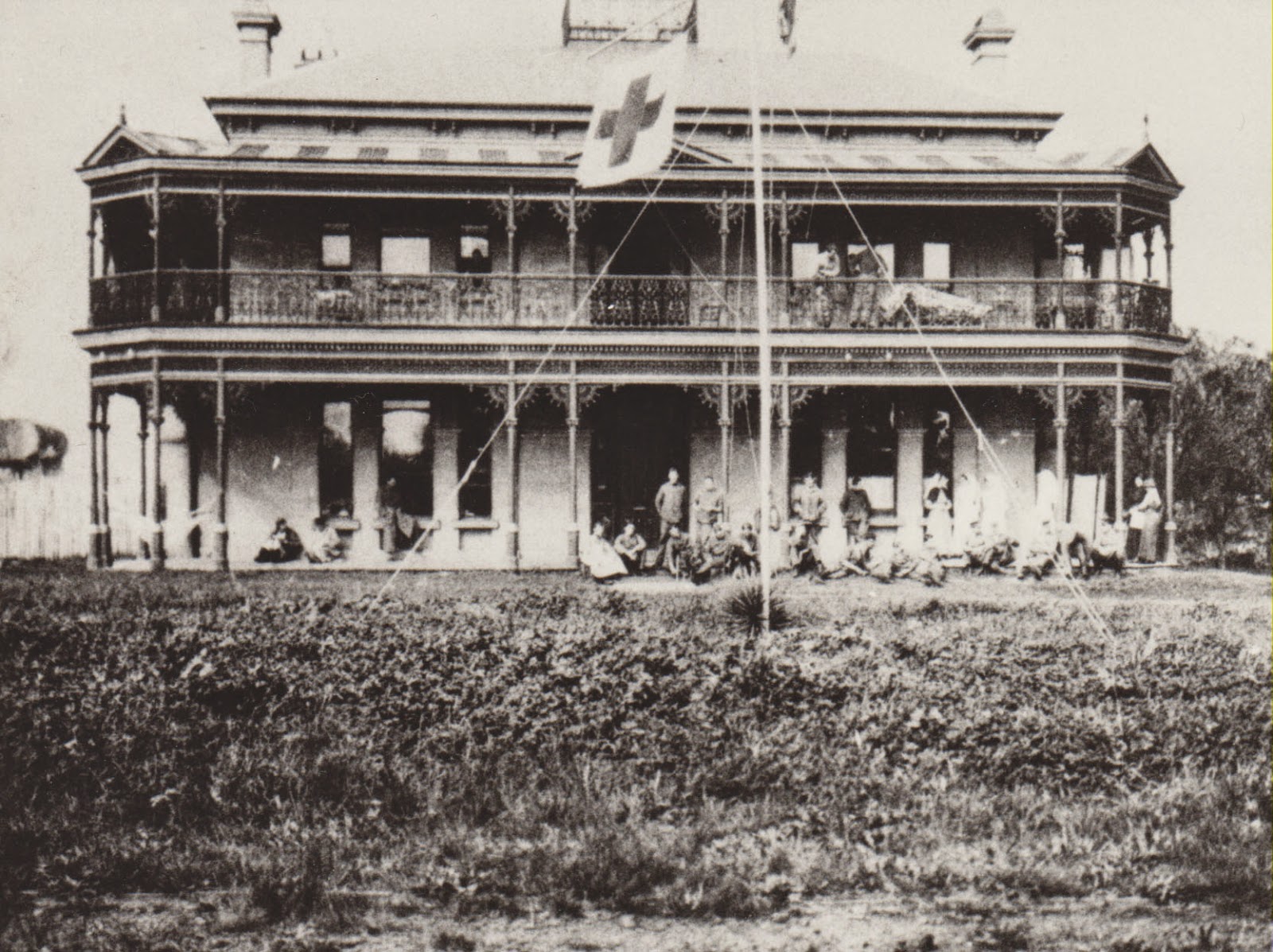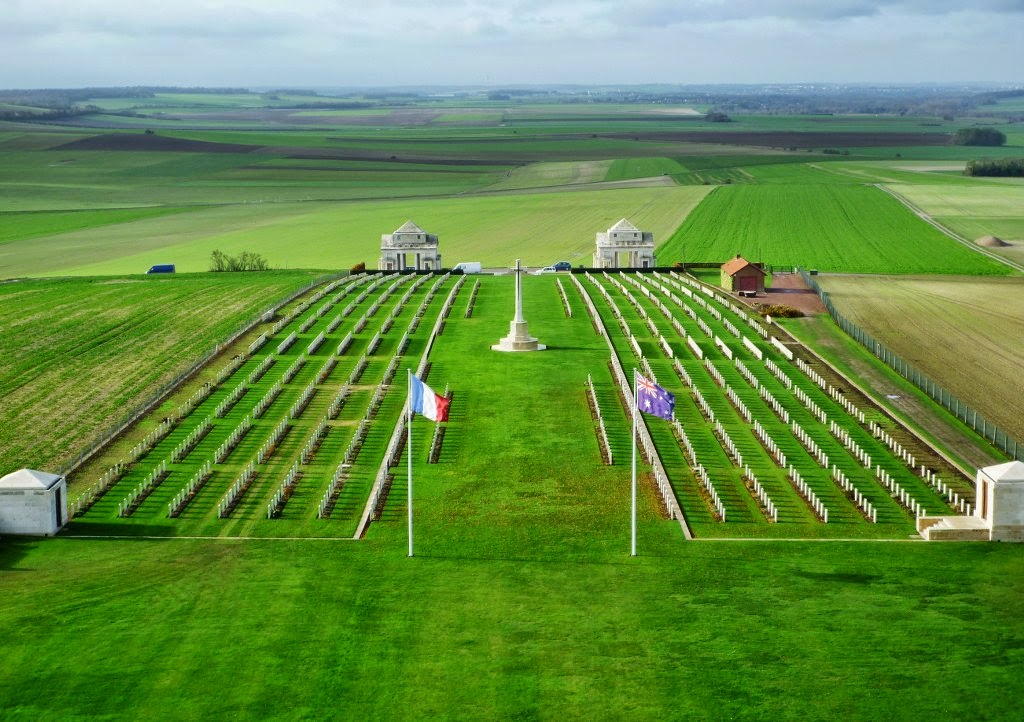Our second Arthur Hunt, 692 Private Arthur Hunt, 57th
Infantry Battalion, was only 18 years old when he enlisted at Brunswick on 24
February 1917. Prior to enlistment he had served for several months in the
Coburg Citizens Forces (the 59th Infantry) who were based at the
Drill Hall in Reynard’s Road, Coburg. (The Hall was demolished in 1987.)
Coburg
Drill Hall at the time of its demolition in 1987.
Images courtesy Coburg Historical Society.
At the time of Arthur’s enlistment,
his mother, Affra Jane Hunt, was living in Sydney Road, Coburg, but they were
not long-term residents of the suburb. Arthur was born in Prahran in 1898 and
went to school at Eastern Road State School in South Melbourne, yet when Affra
Hunt filled out the Roll of Honour Circular after his death, she stated that he
was chiefly connected with Coburg, the place where he had spent his youth. She
did not remain in Coburg long. By the time Arthur had left for the Front, she
had relocated to Monbulk, later still moving to Belgrave.
When Arthur Hunt embarked for the Front on 21 June 1917, he was serving
with the 14th Machine Gun Company, but he later transferred to the
57th Battalion. He arrived in Liverpool on 26 August, was sent to
France on 19 December and was killed at Villers-Bretonneux eight months later,
on 8 August 1918 during the Battle of Amiens and is buried at the
Villers-Bretonneux Military Cemetery.
Click here
to read an account of the Battle of Amiens.
The
correspondence between the widowed Affra Hunt and the military authorities
after Arthur’s death reveals a story that would otherwise not have come to
light. Arthur was not Affra’s son at all, but her grandson. He was actually the
illegitimate son of her daughter Isabel, but had been brought up by his
grandmother and had no knowledge of the circumstances of his birth. The family
had come originally from Tasmania, where his birth mother, now Isabel Jackson,
was living with her husband John and their four children. Of this Arthur had no
knowledge, although one of his grandmother’s letters reveals that she had
intended to tell him the truth about his birth on his return from the war.
The agony of
humiliation experienced by Affra Hunt at having to reveal this information to a
faceless, implacable bureaucracy is evident in these extracts of letters written
in June 1921, almost three years after Arthur’s death. Her references to the ‘humiliating
questions’ she was being subjected to remind us of the stigma of illegitimacy
at that time, a stigma that continued for many decades after.



Affra Hunt
comes across as a strong woman, who rose to the occasion when her daughter
became pregnant by a married man and raised the child as her own. Arthur must
have known that his ‘father’ Robert Hunt, Affra’s husband, was dead, but
clearly he was unaware that his father/grandfather had actually died three
years before he was born. And he probably didn’t realise that his mother/grandmother
(Affra) was nearly 50 when he was born, making it highly unlikely, although not
impossible, that she was his biological mother. He was brought up believing
that his mother Isabel, the oldest child of the family, was his sister. I wonder
whether he puzzled over why his ‘siblings’ were so much older than he: Isabel
was 21 years older, Syd 18 years older, Alice 17 years older and Jean 14 years
older.
Arthur Hunt's brother/uncle, Syd Hunt, born in Launceston in 1880, also served in the war.
4348 Private
Sydney Walter Hunt, 7th Battalion. Images courtesy Colin Rowley.
Syd Hunt
enlisted on 30 September 1915 aged thirty-five. By then he was married to Alice
Ashton and had two children – Affra and Harry. A third child, Walter, was born
after his return from the war. Syd lived in Crown (later Donne) Street, West
Coburg when he enlisted but relocated to Belgrave on his return, working as the
postmaster until 1936 when he was transferred to the city. By the 1950s, he had
lost his vision due to the effects of mustard gas during WW1 and his grandson
recalls him ‘removing his glass eyes’. Syd died at his daughter’s home in
Pascoe Vale in 1965 and is buried at Box Hill Cemetery.
Interestingly,
through their mother/grandmother Affra (Murray) Hunt, Syd and Arthur Hunt could
trace their ancestry back to Third Fleet convict Kennedy Murray, who was tried
at Glasgow in 1786 and sentenced to 14 years transportation. He arrived in NSW
in 1791 and from there was sent to Norfolk Island where his son Kennedy White
Murray was born in 1799. When the settlement at Norfolk Island was evacuated,
young Kennedy White Murray, aged 16, applied for and was granted farmland at
Evandale in Tasmania’s north. (His parents and three brothers were then in NSW,
the parents having been committed to an insane asylum and the boys having been
admitted to the male Orphan School at Richmond.)
Kennedy
White Murray became a prominent Tasmanian sheep breeder and one of Evandale’s
earliest settlers. His son Thomas John Murray was Affra Hunt’s father. Another
family member, Henry Murray, was involved in politics, serving as the Member
for Latrobe (in Tasmania) from 1891 to 1909.
Syd and Arthur Hunt also share
a common ancestor, Kennedy Murray, with Lt. Col. Henry William ‘Mad Harry’ Murray VC, CMG, DSO (and Bar), DCM, reputed to be Australia’s
most decorated soldier in WW1.

Image
courtesy AWM. Image P02939.053. Studio
portrait of Major (Maj) Henry William Murray VC DSO and bar DCM, 13th
Battalion. Maj Murray was awarded the Victoria Cross as a Captain (Capt) for
"most conspicuous bravery" on 4 - 5 February 1917 at Stormy Trench,
France. Capt Murray led his company in an attack and quickly captured the enemy
position, fighting back three heavy counter attacks by the enemy. He encouraged
his men, led bombing and bayonet parties and carried wounded men to safety. He
landed at Gallipoli as a Gunner on 25 April 1915 and was awarded the
Distinguished Conduct Medal in June 1915. He was awarded the Distinguished
Service Order for his work at Mouquet Farm in August 1916, and in April 1917
received the bar to the DSO for his part in the battle at the Hindenburg Line.
He was promoted to Lieutenant Colonel in March 1918 and in May 1919 was created
a Companion of the Order of St. Michael and St. George.
A final word on this tale of two Arthurs ...
In February 1918, a memorial service was held in Coburg to honour the fallen. One of the men remembered was Arthur Hunt. At that time, 18 year old Arthur Hunt was still alive, so it must have been the Englishman Arthur Hunt, who was the subject of my last blog entry.
In 1919, a Memorial Avenue of Trees was planted at Lake Reserve, Coburg. Tree number 49 was planted in memory of Arthur Hunt, but which Arthur? By then, both men had died. Both had lived in Coburg, if only briefly, and both had lived in Sydney Road. Before war's end, the wife of one had moved to NSW and the mother/grandmother of the other had moved to Monbulk.
So, which Arthur Hunt is remembered in the Memorial Avenue of Trees? I think it might be this Arthur, the 18 year old, because his family still had ties to the area and were still living in Victoria. I'm hoping that family members can confirm my hunch.



























